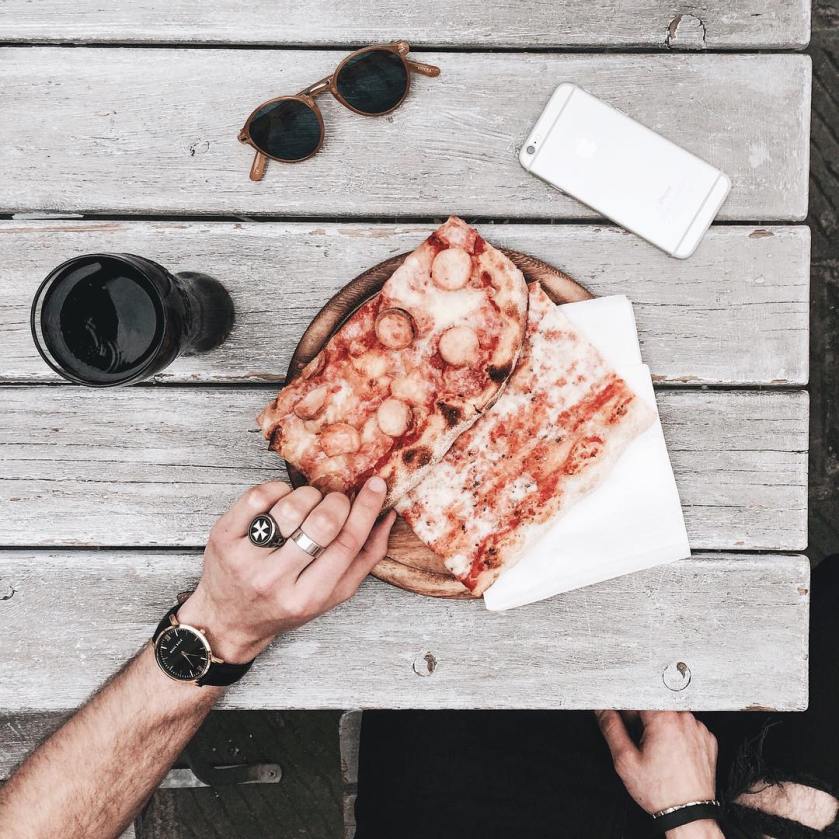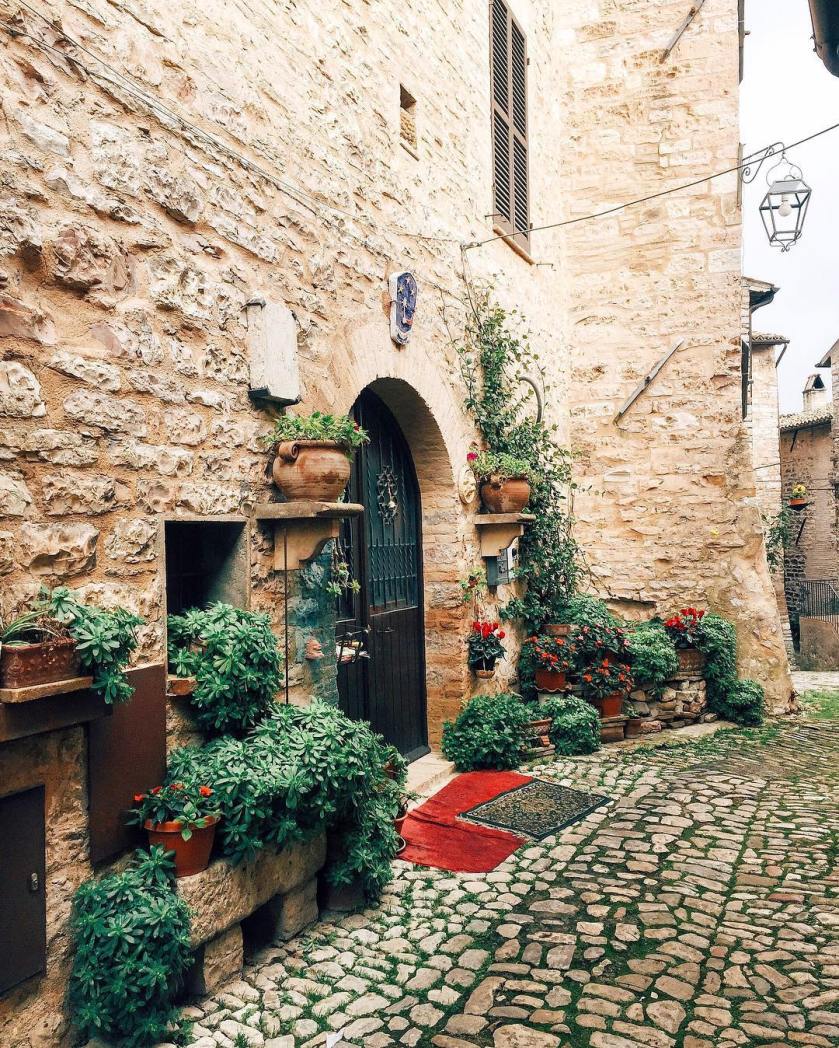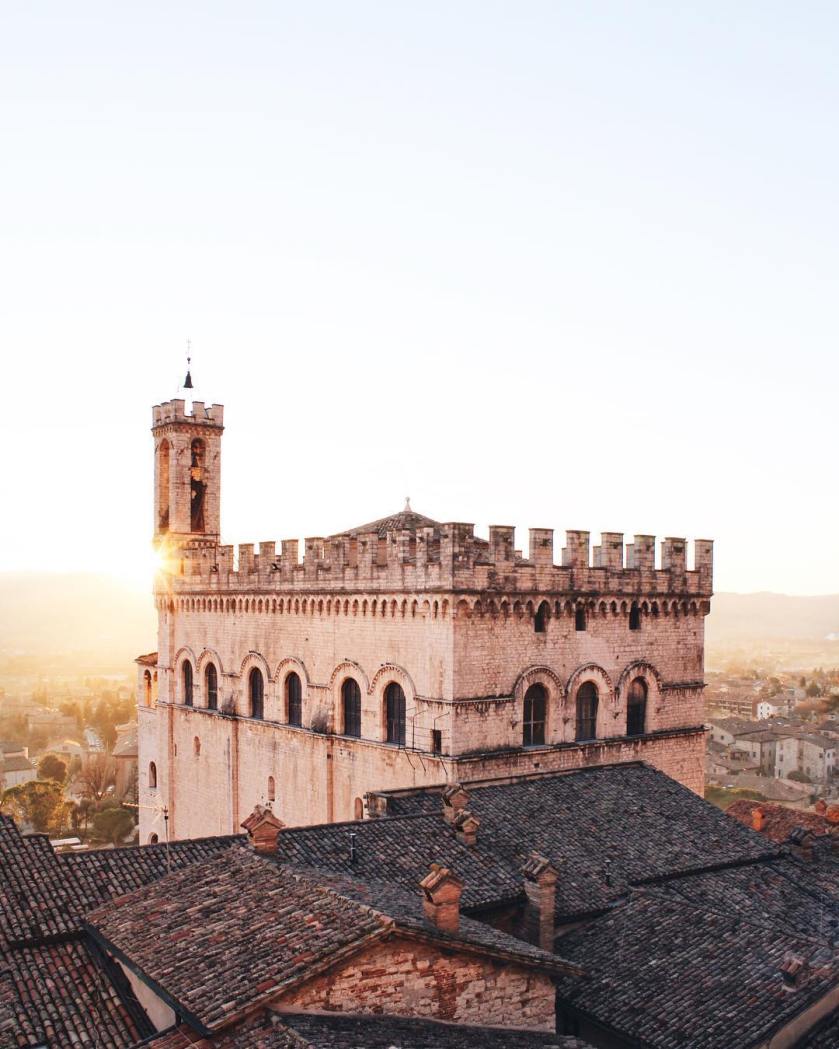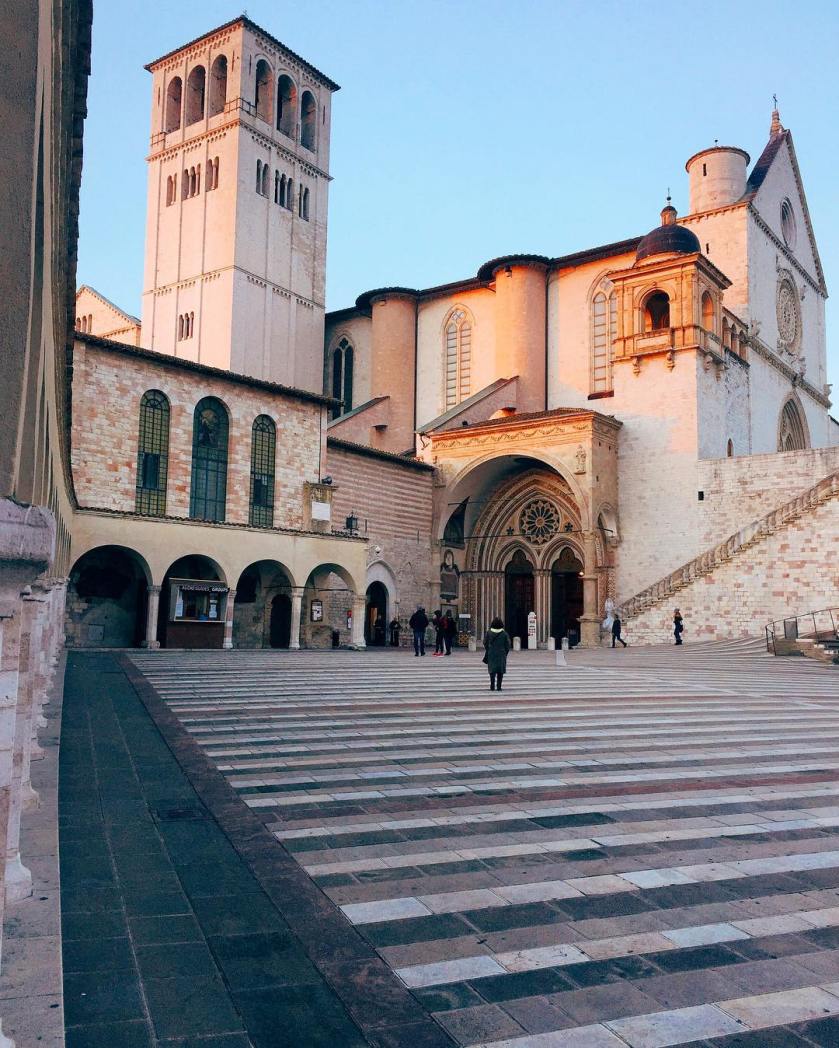The sky is exceptionally clear for a November afternoon. It’s a few minutes past 3 pm and the sun is already slinking into waves of hills – the only green behind saffron-coloured vines. Electric jeeps crawl up a narrow road punctuated with potholes, stopping every now and then to sigh languidly. Finally, we come to a stop and step out. Roy and I are standing in front of the Lorenzo vineyard on the Castello Monte Vibiano estate.
Lucca is in a long-drawn-out introduction of Umbria, the place the Italians from Milan and Rome like to escape to, when suddenly he stops and says, “I want you to listen. Just listen.” The soft autumn wind caresses the golden leaves, birds engage in light humming. Then, nothing. Nothing. Perfect solitude. And Umbria is exactly that. A piece of secret Italy drenched in olive gold.

CASTELLO MONTE VIBIANO
For decades, the Fasola Bologna family has been the custodians of their estate, their soil. It all began a long long time ago. Andrea Fasola Bologna planted thousands of trees to create a fence around their land back in the days to protect the vineyards and olive groves from manmade impact. Slowly, the trees grew and so their vineyards and olive trees prospered. Everything bears fruit. Nature for nature. It’s a simple philosophy. An ethos the family has stood by since.
The ride back to the cellars is leisurely, slow-moving through the vines and the air scented by grapes. As the sky reaches twilight, the wine tasting is served. Wine tasting in Umbria is not a journey of the Italian superstars, like the Brunello di Montalcino, the Barolo or the Amarone. Harvesting wines here is the simple joy of pouring the best of the Umbrian land in a glass. Superstar wines are of course still exceptional. But exceptional does not always have to be famous. We started with the Maria Camilla and the Vigna Luisa – whites scented with fruit. The olive oil follows. A small bottle, for the preservation of quality Lucca says, is poured over bread. The taste is smooth and green. Then comes a platter of salumi and cheese from the macelleria up the hill not far from the estate. We have now come to the reds and that has to be the San Giovanni, the castello’s beloved.






TRUFFLE HUNTING
Like Tuscany, Umbrian soil is known for harbouring the best black diamonds. Near Borgo Castello Panicaglia, there is a tartufaia where truffles are hidden in the ground. Two dogs, Nora and Leia, are accompanying Johnny on the truffle hunt. Pigs were traditionally used but not anymore. “They eat the truffles,” Johnny tells us with raised eyebrows. Truffles are not really a kind of mushroom, and not like anything else. They are simply jewels hidden in the woodlands that have a curious, exquisite taste. As quick as their nose can carry them, Nora and Leia bound to each elusive spot and unearth the truffles. Each find is scooped up by Johnny who stores it securely in a jar.
When we reach the castello, Federico has already prepared scrambled eggs and schiacciata. That day we brought back black truffles. White truffles are also found in Umbria, but they’re more elusive. As Mirca cleans the truffles, we pour ourselves each a glass of Umbrian wine as we imagine the dogs having their own treat, possibly prosciutto di norcia. We then eat the truffles shaved over the eggs and bread. “It’s very traditional,” Mirca says. To me, it’s cucina tipica italiana. Simple and delicious.
Borgo Castello Panicaglia is a 17-room hotel restored from a 13th century castello by Albert and Inger, who wanted to create a family-friendly agriturismo. So the castello became a place where children can bake pizza or while the evenings away perched on lounge pillows at an outdoor cinema. In the garden, Federico grows fruits and vegetables to make food for the guests. The rest are of course sourced locally. Only the best of Umbria. Doubles start from €140.









PERUGIA
The loveliest of meals are often astonishingly accidental, a restaurant on the way to somewhere. We are driving to Perugia, the capital of Umbria. We had wanted to go to Civita di Bagnoregio first but seeing the number of steps, we decided to eat instead. We enter Antico Callaro and ask for the best dish to try. “The truffles or wild boar,” the waitress says without a single beat of hesitation. That is what we got and we find ourselves licking our lips at the last forkful.
Anyone basing themselves in Perugia should stay a few nights at Posta Donini, a painfully beautiful residence that was once the summer home of the Donini family. This is an unruffled 15th century hotel peacefully situated away from the lights and sounds of the city. The delicate flora hand drawings on the pale yellow walls lining the hallways are of flowers and plants found in the garden. Everything is soft, airy and full of beautiful things. One evening, a black cat jumps off a table and scurries to the door as I approach the concierge. The concierge seems unstirred by the cat’s visit, like it is any usual day at Posta Donini. Roy is unconvinced, he was in the room. Of course, I could not let the cat’s presence go unacknowledged. As we stand in front of the concierge in the morning, I lean forward and ask about the black cat, part of me afraid that it had been all a daydream. Then, he proclaims with a flourish of his hand, “Ah… the gatto… He always comes here in the evenings… With the white one.” This is why it comes as a surprise that the cat is sunbathing out by the window that very morning. So Roy has a ball of a time stroking the black feline. He had to concede. There really is a black cat at Posta Donini. We call him Lucio, the Posta Donini cat. Doubles start from €120.
At a family-run restaurant nearby, Albergo Ristorante Siro does the warmest Umbrian dinners. Ask for Fabrizio, he knows the menu like the back of his hand. He is more of a refined friend and gentleman than a waiter. Everyone goes for the meat here; bistecca, salumi… For us too, nonetheless. When Fabrizio presents the bistecca, we cannot help but express our awe at the immense size of the cut. Fabrizio simply chuckles and says proudly, “When I was your age, I could eat two of that on my own.” That is our cue. We did ultimately finish the bistecca… and it was divine. For casual meals, make a trip to Osteria Mangiafuoco where umbrian food is served by Francesco, the owner with a larger-than-life personality. Every dish comes with laughter and nothing is ever taken too seriously.













HILLTOP TOWNS
Orvieto has many great things. Great escalators, to take you up to one of the highest Umbrian towns. Great views, in Piazza San Giovanni and at the edge of Via del Duomo. And a great church. There is nothing more brilliant, more striking, than the Duomo di Orvieto. A reminder that in Orvieto, Christian religiosity is at the centre of everything. Churches in Italy are a very special thing. The art, carved and painted on every surface, is a masterpiece of love. Then there is the food. Another masterpiece of love. In the Piazza del Popolo, the tables at Osteria da Mamma Angela are full with people angling for a plate of salumi, Mamma Angela’s very-Italian specialty.
Near Orvieto, the day is moving slowly in Todi. Gelaterias have stopped selling anything cold in the autumn chill, replacing it with warm torciglione and coffee. The doors of other shops have shuttered in anticipation of the winter break. The Piazza del Popolo remains empty save for the locals catching up on their day-to-day routine. Even in such colourless days, there is much to see in the unhurried pace of the town. School children totter up and down the stairs that lead to the Cattedrale della Santissima Annunziata, playing catching. An elderly lady takes a stroll to the market. Waiters share a laugh with their friends outside the trattoria before dinner starts. Umbria is undisturbed, ever restful. Now I know why the Italians love to escape to Umbria.












